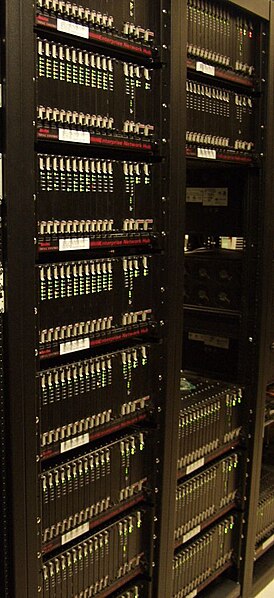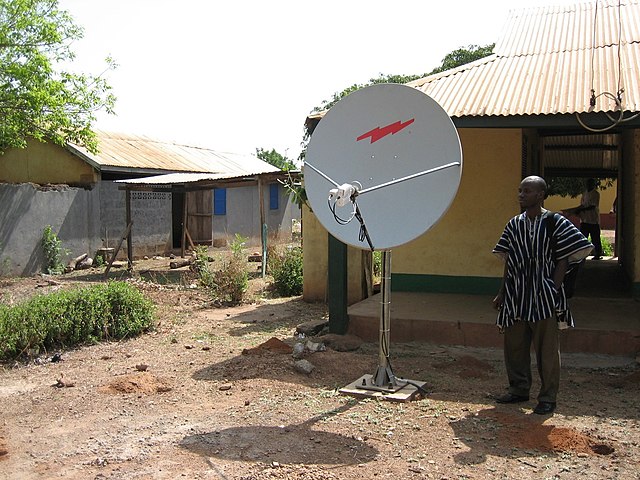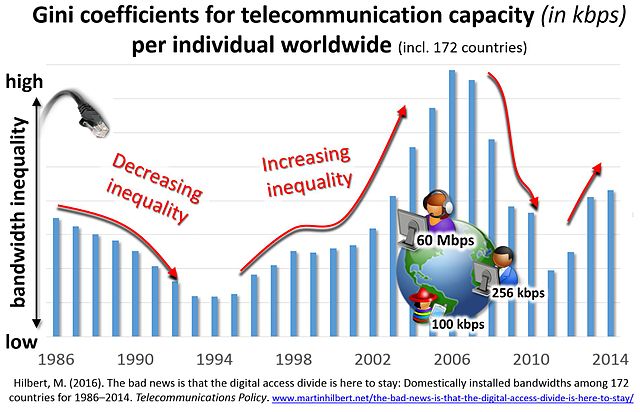Dial-up Internet access is a form of Internet access that uses the facilities of the public switched telephone network (PSTN) to establish a connection to an Internet service provider (ISP) by dialing a telephone number on a conventional telephone line. Dial-up connections use modems to decode audio signals into data to send to a router or computer, and to encode signals from the latter two devices to send to another modem at the ISP.
An array of modems used to accept incoming calls for dialing-up to the internet
56K dial-up modem used at a customer site
Banks of modems used by an ISP to provide dial-up internet service
A TiVo Series2 video recorder's back panel. The telephone socket, located near the cooling fan exhaust, is a way for the machine to download its required electronic program guide data.
Internet access is a facility or service that provides connectivity for a computer, a computer network, or other network device to the Internet, and for individuals or organizations to access or use applications such as email and the World Wide Web. Internet access is offered for sale by an international hierarchy of Internet service providers (ISPs) using various networking technologies. At the retail level, many organizations, including municipal entities, also provide cost-free access to the general public.
Satellite Internet access via VSAT in Ghana
The digital divide measured in terms of bandwidth is not closing, but fluctuating up and down. Gini coefficients for telecommunication capacity (in kbit/s) among individuals worldwide






